Crisis over degrading building construction materials shuts schools and public buildings across Britain
The affected buildings were constructed with reinforced autoclaved aerated concrete, or RAAC, which was cheap and quick to install back when the country was rebuilding after World War II.
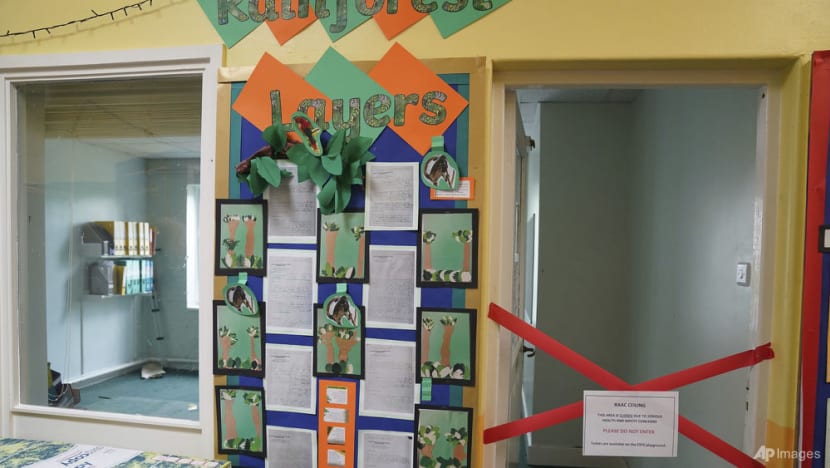

This audio is generated by an AI tool.
LONDON: Some schools and public buildings such as courts and hospitals across Britain have been closed as they face the risk of collapse.
They were constructed with reinforced autoclaved aerated concrete, or RAAC, which was cheaper and quicker to install than concrete, back when the country was rebuilding after World War II.
Now, much of it is degrading faster than expected, forcing the authorities to carry out urgent inspections and replacements.
The United Kingdom’s Health and Safety Executive had announced in August: “RAAC is now life-expired, and liable to collapse with little or no notice.”
The material was used widely in the mid-to-late 20th century.
STUDENTS AND SCHOOLS AFFECTED
Just a few days before British children were supposed to return to school last month after the summer holidays, the Education Ministry ordered urgent inspections of schools built with RAAC.
That meant school administrators across the country had to announce that pupils would not be able to return as planned, in some cases with just a day’s warning.
More than a month on, one secondary school in northeast England is still on a rota system, meaning pupils only enjoy face-to-face learning a few days a week.
One parent, Ms Catherine Davison, told CNA: “They (the students) want to be back in school, they want that routine, they want to be with their friends, and they want to be learning and working and getting on.
“The buildings are completely unsuitable for use now. And we need something as soon as possible so that our kids can be in school all the time.”
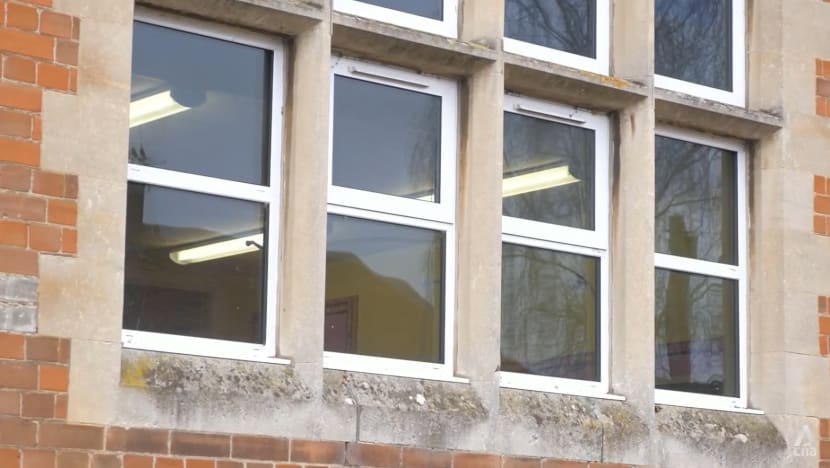
The fact that the dangers of RAAC installations had already been known for years has incensed parents, and also provided ammunition for the opposition Labour Party.
Mr Keir Starmer, Leader of the Opposition, noted that “after 13 years of Tory Government, children are cowering under steel supports stopping their classroom roof falling in”.
The government has emphasised that RAAC was found in only 174 of 22,000 schools across the country.
Prime Minister Rishi Sunak said: “We are assigning each of those schools a dedicated case worker and providing extra funding to fix the problem. In the majority of cases children will attend school as normal and the mitigations take typically just days or weeks to complete.”
STUDYING HOW IT DEGRADES
The government will also cover the repair bill for public buildings, such as courts and hospitals, in which RAAC is found, which could cost hundreds of millions of dollars.
At England’s Loughborough University, experts are trying to find out the limits of old RAAC, and what causes it to become a danger.
With the material already in use across hundreds of public buildings, and possibly far more private ones, experts at the university have been drafted in to determine how to inspect them.
Professor Sergio Cavalaro, Chair of Infrastructure Systems at Loughborough University, said that while standard concrete and cement is dense and coarse, RAAC has “almost no coarse aggregate and a lot of bubbles”.
He explained that its porous structure was intended to make it light.
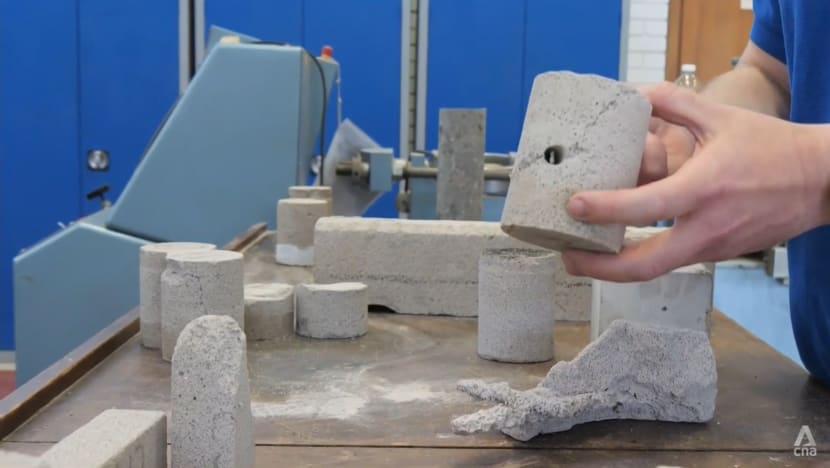
In the last few years, there have been more intense studies into how RAAC degrades, through computer modelling and practical experiments.
“As the material ages, its properties might change, the performance will change, and the way it behaves as well will change in this structure,” Prof Cavalaro said.
“So contrary to what we see with concrete, we are observing certain patterns of behaviour in this material that we were not aware of initially.”
The researchers have found signs that the RAAC was not always installed or manufactured correctly in the first place.
Like any material, the way RAAC behaves can change over time if it is neglected, abused or overloaded.
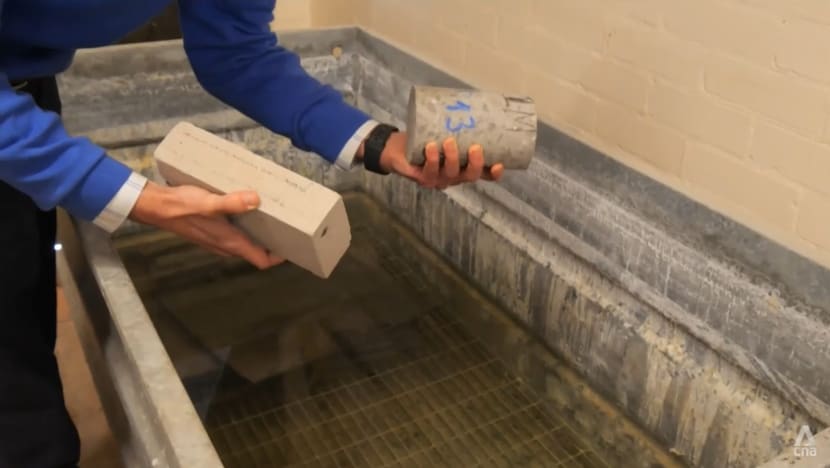
Loughborough University’s professor of construction engineering and management Chris Gorse told CNA: “Through the research, what we realised is that there were problems with the manufacture of RAAC. Particularly, where the reinforcement bar is positioned over the bearing.
“The manufacturers recommended that you have a bearing of around 40mm, but what we found on sites is that sometimes we can have bearings as little as 20mm.”
TIMELINE TO FIX THE PROBLEM
The timeline for replacing old RAAC differs for each building as it depends largely on how much was used in its construction.
For some schools, that meant a couple of weeks' work while it could take months for some court buildings.
For hospitals that will have to undergo significant renovation to replace sections with RAAC, the government aims to have them completed by 2035.
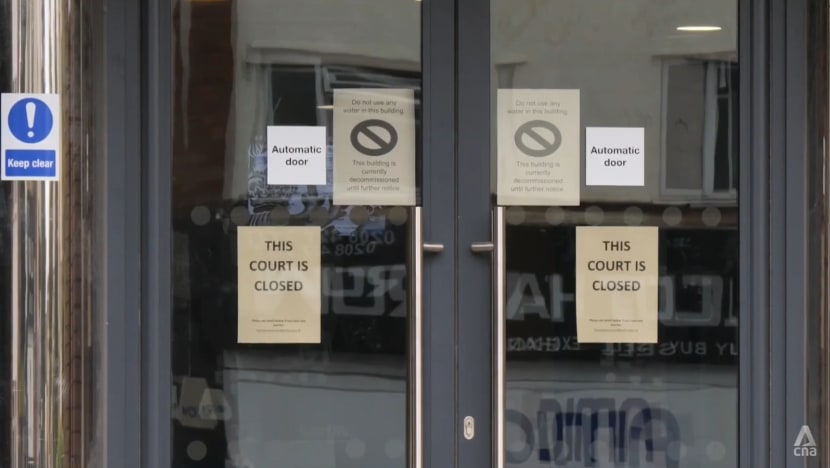
Urgent inspections are now taking place in buildings across the country. But until they are surveyed by experts, there remains a danger.
So far, no one has been injured by any of the collapses associated with RAAC, but engineers note that the disruptions to education, justice, and healthcare are a stark reminder of how critical proper maintenance and inspections are.














